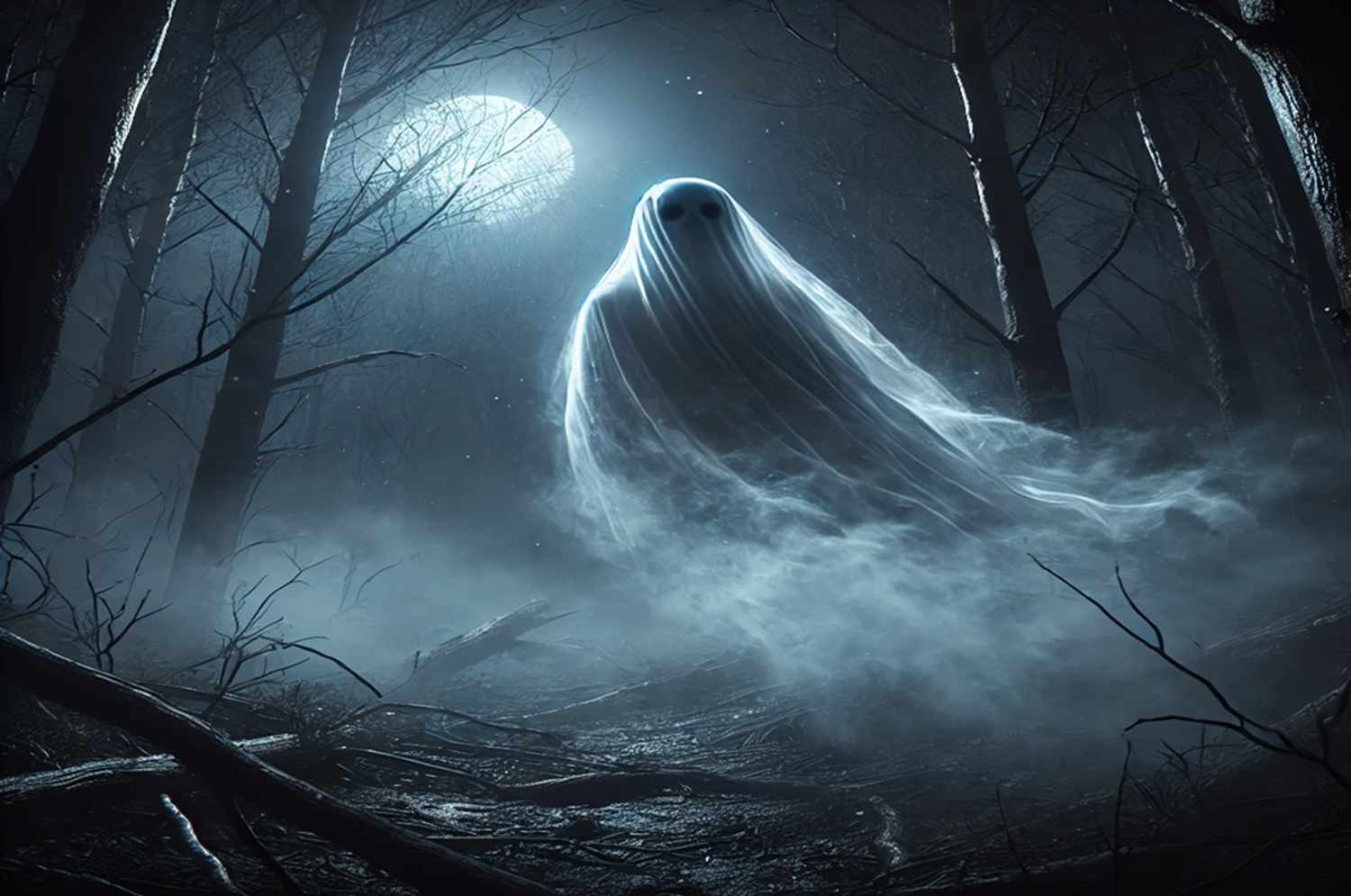Ghosts and spirits have haunted human imagination for centuries. But what’s fact, fiction, or fear? In this beginner-friendly guide, we dive into cultural beliefs, scientific findings, and the psychology behind paranormal encounters. Let’s uncover the truth.
Table of Contents
ToggleWhat Are Ghosts and Spirits?
Definitions Across Cultures
The concept of ghosts and spirits transcends borders, appearing in nearly every culture throughout history. While terms vary—bhoot in India, yūrei in Japan, phantasma in Latin traditions—the core idea remains: a ghost is typically believed to be the soul or essence of a deceased person who has not fully transitioned to the afterlife.
In Hinduism, spirits may linger due to unresolved karma or improper last rites. In Western cultures, especially those influenced by Christianity, ghosts are often seen as souls trapped between Heaven and Earth, either seeking closure or stuck due to sin. Meanwhile, African and Indigenous belief systems often portray spirits as ancestral guides or nature-bound entities, not necessarily harmful.
These variations show how deeply spirituality and cultural narratives shape our understanding of the unseen world.
Common Beliefs About the Afterlife
Across civilizations, the afterlife has always held mystery and weight. Many believe that life continues in some form after death—whether through reincarnation, spiritual realms, or eternal rest.
In Christian theology, souls ascend to Heaven or descend to Hell based on moral judgment. Buddhism and Hinduism emphasize rebirth, where the soul takes a new form based on past karma. In Islam, spirits enter Barzakh, a waiting place before Judgment Day.
Despite the diversity, a common thread runs through these beliefs: the soul survives physical death. Ghosts and spirits, in this view, are either remnants of those who haven’t found peace or messengers bridging the living and the dead.
Types of Paranormal Entities
Understanding the paranormal begins with knowing the different types of entities often reported in supernatural experiences. While popular culture often uses terms like “ghost” and “spirit” interchangeably, there’s more depth to these classifications than most people realize.
Ghosts vs. Spirits: Key Differences
Though both are non-physical beings believed to exist beyond death, ghosts and spirits differ in purpose, energy, and behavior:
- Ghosts are typically earthbound and are often thought to be trapped by unresolved emotions, trauma, or unfinished business. They may be unaware they’ve passed on.
- Spirits, on the other hand, are believed to have crossed over to the afterlife. They visit loved ones occasionally, often bringing a sense of peace, comfort, or closure.
Think of ghosts as echoes of the past, stuck in a loop, while spirits are more evolved presences that return intentionally.
Poltergeists, Shadow People, and Residual Hauntings
Beyond ghosts and spirits, paranormal investigators and researchers have identified other unique entities:
- Poltergeists – Known for physical disturbances (moving objects, loud noises), these entities are highly energetic. Some theories suggest they’re manifestations of intense psychic energy, particularly from adolescents.
- Shadow People – These dark, humanoid figures are often seen from the corner of the eye and usually evoke feelings of dread. Some speculate they’re interdimensional beings or manifestations of negative energy.
- Residual Hauntings – Unlike intelligent hauntings, residual hauntings are like spiritual recordings. The entity doesn’t interact with the living—it simply repeats the same actions, like a scene playing on loop.
Each of these entities offers a different lens through which to view unexplained phenomena, reminding us that the paranormal is a layered and complex field of study.
The Psychology Behind Ghost Sightings
Understanding ghost sightings requires more than a paranormal lens—it demands a psychological one. Many experiences labeled as “ghost encounters” can be traced back to natural brain processes and emotional states.
Sleep Paralysis and Hallucinations
One of the most scientifically backed explanations for ghost sightings is sleep paralysis—a condition where a person wakes up unable to move, often accompanied by vivid and terrifying hallucinations. During this state, the brain is partially awake but the body remains in REM sleep mode. This mismatch can create eerie sensations:
- A strong feeling of presence in the room
- Shadowy figures or distorted sounds
- Sensations of pressure on the chest
These hallucinations feel real because the brain’s fear center (the amygdala) is hyperactive while logical reasoning is suppressed. Throughout history, people have interpreted these episodes as demonic or ghostly attacks, especially in cultures where supernatural beliefs are strong.
Fear, Grief, and Suggestion in Paranormal Experiences
Our minds are incredibly susceptible to emotional states like fear and grief—two common triggers for ghost sightings. Here’s how they play a role:
- Fear: In dark, unfamiliar environments, the brain defaults to threat detection. This can turn random shadows or creaks into signs of a ghost.
- Grief: After losing a loved one, some people experience “grief hallucinations,” such as seeing or hearing the deceased. This is the brain’s way of coping with loss.
- Suggestion: Belief in the paranormal makes people more likely to interpret ambiguous stimuli as supernatural. If you’re told a house is haunted, you’re far more likely to “experience” something strange.
These factors don’t disprove people’s experiences—they help explain why such encounters happen. Psychology doesn’t reject the emotions behind ghost sightings; instead, it provides a framework to understand them without jumping to supernatural conclusions.
What Does Science Say About Ghosts?
Debunking Paranormal Claims with Technology
Modern science and technology have played a critical role in challenging the existence of ghosts. Tools like infrared cameras, electromagnetic field (EMF) detectors, and audio recorders are often used in ghost-hunting shows—but ironically, these same tools often debunk rather than confirm paranormal activity. For instance, many so-called ghost sightings have been traced back to drafts, faulty wiring, or even infrasound—low-frequency sound waves that the human ear cannot detect but may cause unease or hallucinations.
Scientific investigations emphasize natural explanations over supernatural ones, urging people to consider logical possibilities before jumping to conclusions. When rigorously tested, ghost sightings and paranormal experiences rarely withstand controlled experimental conditions.
Brain Activity, EMFs, and Environmental Factors
Neurological research suggests that many ghost experiences may originate in the brain itself. Sleep paralysis, for example, is a well-documented phenomenon that can cause vivid hallucinations, including the feeling of a ghostly presence. Similarly, high levels of electromagnetic fields—often present in old buildings—can affect the brain’s temporal lobe, leading to sensations of anxiety or being watched.
Environmental factors like mold, carbon monoxide leaks, and even flickering lights can also impact human perception, causing people to misinterpret what’s happening around them. In most scientific cases, the eerie feeling of a “haunted” location has far more to do with psychology and physics than with spirits of the dead.
Myths, Legends & Folklore From Around the World
India, Japan, Europe, and Native Traditions
Ghost stories have long lived in the heart of every culture — passed down through whispered tales, sacred texts, and fireside folklore. In India, spirits like chudails and pret-atmas are deeply rooted in religious beliefs, karma, and unfinished duties. These spectral beings often serve as warnings about moral or social transgressions.
In Japan, ghostly figures like yūrei emerge from centuries-old beliefs shaped by Buddhism and Shintoism. Their long, white robes and lingering sorrow represent unresolved emotions and the power of ancestral spirits.
European folklore is rich with haunted castles, banshees, and spirits of the restless dead. These tales often reflect the fear of death, the unknown, and historical trauma like plagues or wars.
Among Native American traditions, spirits aren’t merely fearsome—they’re part of a complex relationship with the land, ancestors, and nature. Stories of skinwalkers, wendigos, and spirit animals are not just scary—they carry teachings about balance, respect, and consequences.
How Stories Shape Cultural Ghost Beliefs
These myths are more than eerie entertainment—they help explain the unexplainable. Ghost stories often mirror a culture’s views on death, justice, the afterlife, and morality. In many cases, they reflect what society fears most: betrayal, isolation, or divine punishment.
Culturally, ghosts become a shared symbol—some feared, some revered. Across the globe, ghost beliefs continue to evolve, but they remain a powerful lens through which we understand our values, history, and collective psyche.
Real-Life Encounters: Fact or Fiction?
Are ghost stories just folklore passed down through generations, or is there truth behind the chills? This section explores famous locations tied to paranormal claims and separates spine-tingling storytelling from credible eyewitness accounts.
Famous Haunted Places
Throughout history, certain locations have earned a reputation for unexplained events and supernatural activity. Here are some of the most talked-about haunted places around the world:
- The Tower of London (UK): Known for ghostly apparitions of Anne Boleyn, this fortress is steeped in royal blood and grim history.
- Bhangarh Fort (India): Often called the most haunted place in India, locals are forbidden to enter after sunset.
- The Stanley Hotel (USA): Inspiration for Stephen King’s The Shining, guests often report eerie piano music and ghost sightings.
- Château de Brissac (France): The “Green Lady” is said to roam this historic castle in a sorrowful, semi-visible form.
What makes these places compelling is not just the stories—but the consistent patterns of witness accounts, audio anomalies, and strange environmental readings captured by paranormal investigators.
Credible vs. Sensational Ghost Stories
Not all ghost stories hold equal weight. Here’s how to differentiate:
- Credible Stories often come from multiple unrelated witnesses, are backed by environmental changes (like EMF spikes, temperature drops), and lack commercial motives.
- Sensational Stories, by contrast, tend to rely heavily on drama, lack verifiable sources, and are frequently linked to tourism or entertainment purposes.
Experts urge skepticism but also acknowledge that some accounts defy logical explanation. While scientific proof of ghosts remains elusive, many real-life experiences suggest that something unexplained lingers in the shadows.
Can You Protect Yourself from Spirits?
Whether you believe in spirits or view them through a psychological lens, many people seek ways to protect themselves from unseen or unsettling energies. From ancient rituals to modern mental health strategies, protection comes in both spiritual and scientific forms.
Spiritual Practices & Cleansing Rituals
Many cultures around the world have long relied on spiritual tools and rituals to protect against negative energies or malevolent entities. Here are some common practices:
- Smudging with Sage or Palo Santo: Burning these herbs is believed to cleanse spaces of spiritual negativity.
- Salt Barriers: Sprinkling salt around entryways or corners is thought to create a protective boundary.
- Amulets and Talismans: Items like the evil eye, crystals, or religious symbols are used for energetic shielding.
- Prayer and Meditation: Focused spiritual connection, chanting, or mantras are said to build inner strength and repel harmful energies.
These rituals often offer not just protection but also a sense of psychological comfort and control.
Scientific Skepticism and Psychological Safety
From a scientific and psychological perspective, the feeling of a spiritual presence or haunting can often be traced to:
- Environmental Factors: Mold, carbon monoxide leaks, or EMF exposure may cause hallucinations or paranoia.
- Sleep Paralysis: This condition can produce intense visions and sensations often mistaken for spirit encounters.
- Cognitive Biases: Our brains seek patterns and meaning, sometimes interpreting random events as paranormal.
- Stress and Trauma: Unresolved emotions can manifest as external “presences” or haunting experiences.
In these cases, psychological safety can be restored through grounding techniques, therapy, and understanding the science behind our perceptions. Being informed can be as protective as any ritual.
Read Also:
True Love Explained by Psychology: What Science Says About Real Relationships
How to Overcome Social Anxiety: A Beginner’s Guide to Beating Social Phobia
FAQ:
Q1: Are ghosts real according to science?
Science hasn’t found concrete evidence of ghosts, though many paranormal experiences have psychological or environmental explanations.
Q2: What’s the difference between a ghost and a spirit?
A ghost is often thought to be a trapped soul; a spirit is seen as peaceful and free.
Q3: Why do people believe in ghosts?
Belief often stems from cultural upbringing, personal loss, fear of the unknown, and storytelling
Q4: What causes ghost sightings?
Ghost sightings may result from sleep paralysis, hallucinations, EMF exposure, or emotional stress.
Q5: Can places really be haunted?
There’s no scientific proof, but stories of haunted places persist due to legends and psychological influence.









1 thought on “The Truth About Ghosts: Science, Stories, and Supernatural Secrets”